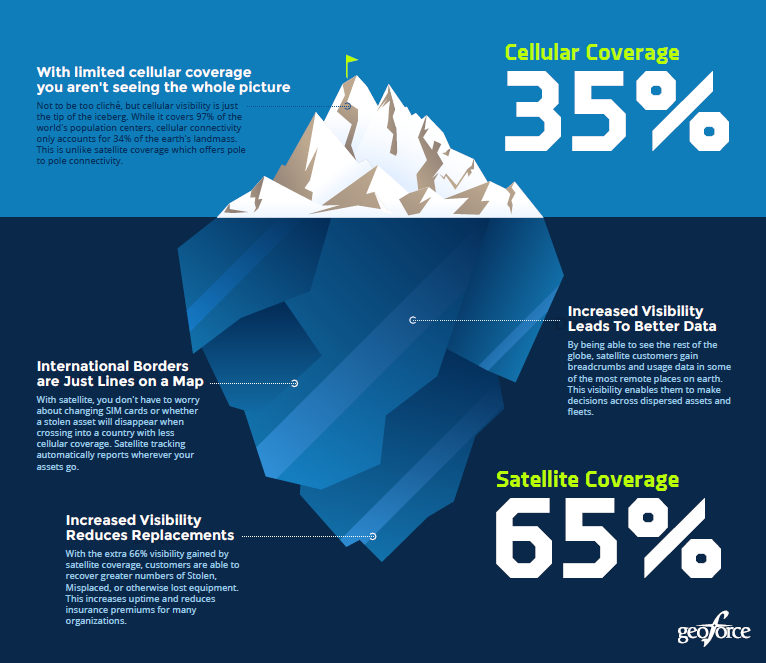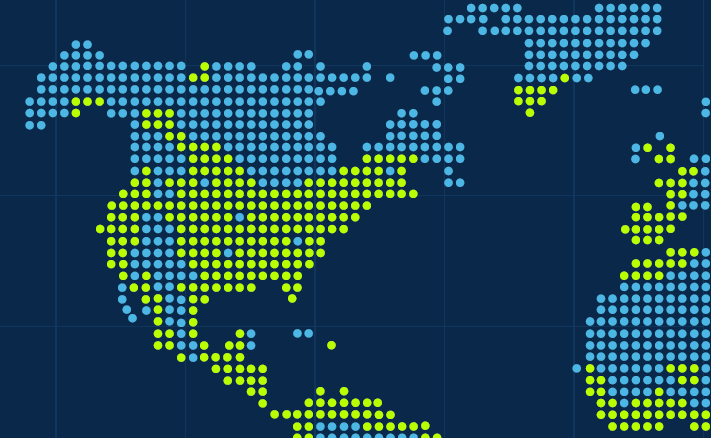Industries such as oil and gas, agriculture, and mining are characterized by some of the most remote environments on the planet. In these businesses, equipment deployment and uptime directly impact the bottom line and influence competitive advantage through the visibility of utilization, operational patterns, and compliance-driven maintenance. Field operations organizations can benefit from understanding the strategic advantages of satellite versus cellular asset tracking.
Asset visibility starts with best-in-class, ruggedized GPS trackers that can withstand extreme temperatures and hazardous conditions. Together with an asset management platform, near real-time data available from this equipment transforms monitoring exercises into proactive decision-making based on ongoing logistics intelligence. For global leaders who need more than just “dots on a map,” understanding the power of satellite GPS tracking versus cellular is key to platform selection.
Cellular visibility is just the tip of the iceberg. While it covers 97% of the world’s population centers, cellular connectivity only accounts for 34% of our planet’s landmass. Truly global organizations simply cannot depend on sparse, sporadic, or entirely absent cellular tower proximity to effectively manage dispersed assets and fleets.

The Value of Global Coverage and Reliability
Satellite coverage offers true pole-to-pole connectivity that cellular coverage simply cannot match. By being able to see the rest of the globe, field operations with satellite connectivity gain breadcrumbs and usage data in some of the most remote places on earth. The absence of international borders in a satellite implementation removes the burden of changing SIM cards and the risk of losing assets that can disappear within a country with minimal cellular coverage. Satellite tracking reliably reports wherever your assets go.
This is a game-changer in terms of accurate decision-making, providing uninterrupted global tracking which helps maintain business operations, improve asset use, and lower capital expenses.
Greater visibility through continuous satellite monitoring naturally provides more data, enabling a leading-edge asset management platform to deliver near real-time analysis for time-sensitive operations. For industries like logistics and shipping, the analysis of satellite data enables route optimization, reduces fuel costs, and improves delivery times. With the extra 66% visibility gained by satellite coverage, organizations can also recover greater numbers of stolen, misplaced, or otherwise lost equipment. In addition to empowering compliance programs, increased visibility can reduce insurance premiums by ensuring equipment certification, confirming maintenance checks, and reducing downtime.
The ROI of Satellite GPS Tracking
Actionable insights for proactive decision-making are a significant part of the ROI of an asset management platform. Leading directly to better utilization due to reliable data, direct and indirect cost savings are achievable for businesses of all sizes. Cross-industry cost savings in areas such as fuel costs, equipment replacement, insurance premiums, and labor are not uncommon.
Although it is true that satellite-based tracking can be slightly more expensive upfront due to the cost of hardware, over the lifetime of the hardware many customers see a reduced total cost. This is due to longer battery life, more dependability, and less technology variance leading to infrequent replacements. Additional ROI examples in specific industries include:
- A 20% decrease in equipment downtime and a 15% reduction in operational costs for a prominent oil and gas company with multiple drilling sites.
- A 30% increase in operational efficiency and a 20% reduction in resource wastage for a leading agricultural enterprise.
- A 10% reduction in delivery times and a 15% decrease in fuel costs for a complex logistics company.
These real-world applications illustrate the significant contributions that satellite GPS brings to achieving operational efficiency, asset security, and cost savings.
Geoforce: A Strategic Partner for Scalable Asset Management
Combining a cloud-based software platform with ruggedized GPS tracking devices, Geoforce’s asset intelligence solutions bring control to even the most remote field operations. The company’s asset tracking devices are built for the world’s toughest field operators in industries like construction, oil and gas, mining, transportation, equipment rental, and agriculture. Our GT1 Global Asset Tracker is not only the world’s most rugged device, but also its safest with a IECEx/ATEX Zone 0 rating for use in hazardous, explosive environments.
Geoforce offers cellular, satellite, and hybrid options for worldwide asset tracking. By emphasizing visualization capabilities for field operations, Geoforce delivers actionable insights through analytics-driven utilization dashboards. As a result, organizations can more efficiently manage all assets and operations in a single pane of glass.
Geoforce empowers you to optimize your field and fleet operations. Let us show you the best-fit solution.
Publisher: Source link











